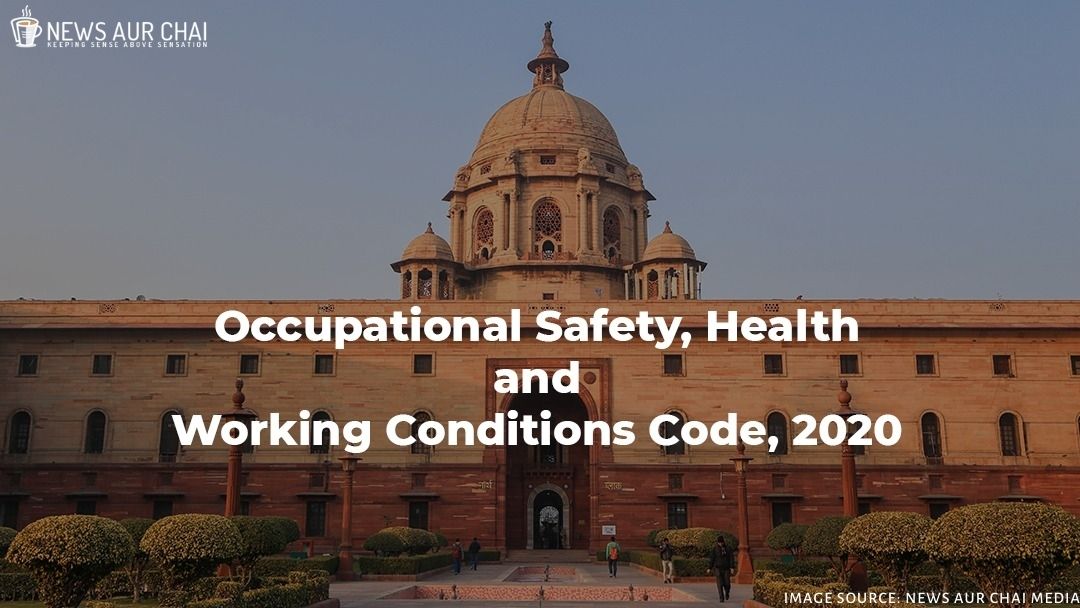
The Occupational Safety, Health, and working conditions code 2020 was introduced in the Lok Sabha on September 19 by the Ministry of Labour and Employment under Mr. Santosh Kumar Gangwar. On September 22, Lok Sabha passed three bills on Labour reforms: (i) Industrial Relation Code 2020, (ii) Occupational Safety, Health and working conditions code 2020, and (iii) Social Security Code, 2020. These three bills were passed in Rajya Sabha on September 23.
LEM Shri @santoshgangwar introduces 3 historic Game Changer Labour welfare reforms in Rajya Sabha for consideration and passing.
FULL VIDEO- https://t.co/Kt5lwSzoFu#AtmanirbharShramik #BadegaRozgar @PIB_India @PMOIndia @mygovindia @DDNewslive @PTI_News @MIB_India @DDNewslive pic.twitter.com/UN2JJb72Br— Ministry of Labour (@LabourMinistry) September 23, 2020
The Occupational Safety, Health and Working Conditions Code, 2020, has combined 13 existing Acts regulating health, safety, and working conditions, including (i) Factories Act, 1984, (ii) the Mines Act 1952, and (iii) Contract Labours (Regulations and Abolition) Act,1970.
Occupational Safety & Health Code (OSH) gives much required wholesome support to the Migrant Workers. #AatmaNirbharShramik #BadegaRozgar #SatyamevJayateShrameyJayate pic.twitter.com/X2HV3E4CaV
— MyGovIndia (@mygovindia) September 25, 2020
Inclusion: The Code will apply to establishments employing in at least ten workers. It will apply to all mines, docks, and establishments carrying out any hazardous or lethal activity (might be informed by the Central Government). Certain provisions of the Code, for example, health and working conditions, apply to all employees. Employees here include workers and all other persons earning wages for any work, including managerial, administrative, or supervisory work.
Exclusions: The relevant government can exclude any workplace or activity from the Code in case of a public emergency, catastrophe, or pandemic for as long as a year. Further, the State Government can exclude new factories from the Code for the specified period for making more financial activity and employment.
Registration and license: Establishments covered by the Code are needed to enlist within 60 days (of the commencement of the Code) with enrolling officials, delegated by the Central or State Government. Factories might require to get a license to run. The Code requires those hiring laborers, for example, beedi and cigar labors and contract workers to acquire licenses.
Duties of businesses: Duties of employers include: (i) providing a workplace that is free from dangers, (ii) providing free yearly health examination in notified establishments, and (iii) informing relevant authorities in case of any mishap at the workplace leading to death demise or substantial severe injury to any employees. Additional duties are directed for employers in factories, mines, docks, plantations, building, and construction work, including arranging a risk-free workplace and educating employees on safety protocols.
Employees’ rights and duties: Duties include taking care of their own health and safety, complying with safety and health standards, and reporting perilous work incidents to the Inspector. Employees likewise have certain rights, including rights to obtain information regarding safety and health standards from the employers.
Work hours: No workers will be required or permitted to work in any establishment for over eight hours in a day. For overtime work, workers must be paid twice the rate of their daily wages and prior assent of workers under such circumstances. Women can work past 7 pm and before 6 am, subject to any safety-related or other conditions advised by the government.
Leave: Workers can’t be obliged to work for over six days per week. Further, they should get one day of leave of 20 days of work per week.
Working conditions: The Central Government will notify regarding the working conditions such as hygiene work environment, clean drinking water, latrines, ventilation, and sufficient lighting.
Welfare Facilities: Amenities such as canteen, medical aid boxes, and crèches may be provided according to the standards prescribed by the Central Government. Additional facilities might be stipulated for factories, mines, docks, and building and construction works, for example, welfare officials and temporary lodging.
The Code includes three schedules containing lists of
- 29 diseases that the employers are required to inform the authorities of, in case a worker contracts them,
- 73 safety matters that the government may regulate, and
- 40 industries including hazardous processes.
The Central Government might amend the lists.
Inspectors: The government can select inspector cum-facilitators to examinations and analyze into mishaps. They have certain additional powers in case of factories, mines, docks, and building and construction works, including (i) reducing the number of employees working in sections of the establishment, and (ii) forbidding work in hazardous circumstances.
Advisory boards: The Central and State Governments will set up Occupational Safety and Health Advisory Boards at the national and state level. These Boards will assist the respective government on the standards, rules, and regulations to be framed under the Code.
Safety boards of trustees: The government may require certain establishments to constitute safety committees in case of a specific class of workers. The committee will comprise representatives of the employers and workers and will perform as a link between them. The number of representatives of workers in such a committee must not be less than that of employers.
The code gives key importance to the health and safety of the workforce or laborers or workers which constitute a major part of India’s population. The post-corona working condition as per the code seems much safe and favorable for the employees.





